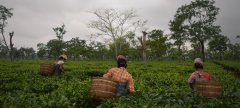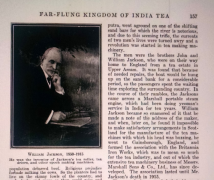Assam tea production process | what does rolling oxidation mean? The Historical Story of Rolling Machine
Jackson's innovations and many related ones later stand out in two ways: first, they were not automated; and second, the processes they created had a huge impact.
Jackson's contribution was to greatly improve the critical rolling stage in black tea production. This stage is after the tea leaves are picked and wilted.
Rolling allows it to acquire the right ductility, moisture and blade structure, allowing oxidation processes to activate compound interactions. This forms the flavor, color and aroma of tea.
Rolling is a simple process, but involves very complex time and technology. It grazes the harvested leaves, and when it withers, it carries away the moisture. This opens the chloroplast cell in the green leaf without destroying, deforming or dividing it. It releases catalyst enzymes to start chemical reactions (fermentation oxidation).

Scientific summary gives molecular dynamics hints: "polyphenol oxidase begins oxidizing green catechins to form orange theaflavins." And then they aggregate into brown thearins." In layman's terms, it's "this is tricky, you have to do it right." It takes a lot of pressure, but it needs to be handled carefully. The leaves must be rotated and rolled continuously to form a shape.
In China, skilled workers also knead green leaves counterclockwise by hand. This Japanese technique is equivalent to a demonstration by a professional tea maker, moving hands back and forth to form neat round needles. For Assam black tea, the rolling of the tea leaves is entirely manual, drying the leaves on charcoal and then treading them into wooden crates for shipment.

A lot of heat is generated during rolling, especially in summer and autumn. It must be released at the right time to control the rate of polyphenol oxidation. Jackson's machine must provide a rotation of different leaves with and without pressure, maintaining uniformity in leaf structure while gently breaking cells.
The weight of each batch rolling is very large:100 kg is the standard batch unit and is carried out as a separate "batch". Later rollers rolled 500 kg at a time.
Jackson's innovation came at the right time. Assam tea cannot compete with Chinese tea because even with imported "coolie" labor, it cannot compete with China's low cost and high experience.
Productivity in Assam is very low and the burden of rolling is disproportionate. Crews often discuss working late into the night to get the job done before the leaves lose freshness, tiny details that can spoil output, from small to too big a handful a worker picks up, how tightly he or she holds it, the size and ventilation of the room.
His machine was amazingly complex, as the excerpt from the book below shows.
This level of detail is fifteen pages long. Jackson stood out for his originality in design, engineering talent and his knowledge of tea growing.

(Source: Alexander James Wall, Tea Factories and Tea Machinery, 1923). The book was a digital, out-of-print reprint; it was not a bestseller at the time, but it was informative and surprisingly interesting.)
Of course, all of this happened before electricity became universal. Steam, wood and coal power the engine. The climate is humid and corrosive-Assam is essentially a semi-virgin jungle. Spare parts can't come in by FedEx.
Electricity appeared in India in 1879, and the first electricity supply was a hydroelectric station near Darjeeling Tea Garden in 1890. The earliest street lamps in India were introduced in 1905, but electricity did not enter Assam until 1923.
Important Notice :
前街咖啡 FrontStreet Coffee has moved to new addredd:
FrontStreet Coffee Address: 315,Donghua East Road,GuangZhou
Tel:020 38364473
- Prev

The tea manor in Assam black tea producing area of India introduces the black tea production process and the characteristics of planting technology.
This is the second harvest of tea or summer picking at this time of year. At the beginning of the harvest season, we arrived at Dibruger, a tea area in Assam. The rain has come; it has come early this year. It has also been raining in Darjeeling, and Assam is just beyond the mountain. Although Darjeeling and Assam are geographically close, there are still many differences between them. No.
- Next

Black tea production technology improves the Scottish elements of British black tea promotes the development story of Assam black tea
Jackson was one of the great innovators in Scotland who made the widely used term English tea misleading and stupid. The following is an excerpt from a 1930s book (All About Tea, volume 2, 1935, William Harrison Ukers) in which he stumbled upon an opportunity to industrialize tea production in Assam. Jackson only
Related
- Beginners will see the "Coffee pull flower" guide!
- What is the difference between ice blog purified milk and ordinary milk coffee?
- Why is the Philippines the largest producer of crops in Liberia?
- For coffee extraction, should the fine powder be retained?
- How does extracted espresso fill pressed powder? How much strength does it take to press the powder?
- How to make jasmine cold extract coffee? Is the jasmine + latte good?
- Will this little toy really make the coffee taste better? How does Lily Drip affect coffee extraction?
- Will the action of slapping the filter cup also affect coffee extraction?
- What's the difference between powder-to-water ratio and powder-to-liquid ratio?
- What is the Ethiopian local species? What does it have to do with Heirloom native species?

